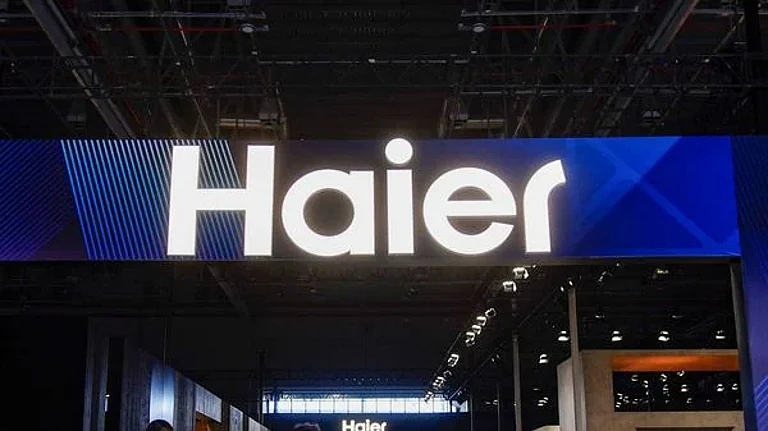Priyam Veer Singh, a worker in a restaurant in south Delhi, recently bought a smartphone worth Rs 25,000. Not only that, he gifted his wife one too. Like Priyam, Axat Bharadwaj, a Delhi-based techie, too used his credit card to buy a smartphone that cost Rs 50,000.
Proliferation of credit cards, easy EMI options, cash back and other rewards are luring the young into splurging on premium products. The Rise of Affluent India, a recent report by investment bank Goldman Sachs, says the consumption of premium goods in India has seen a significant rise in recent years. This trend has been labelled the “premiumisation of the Indian economy” by analysts.
According to the report, premium brands have grown vis-a-vis mass brands. While sales of Royal Enfields have gone north, mass motorcycle brands have shrunk by nearly 20% compared to pre-Covid levels. Similarly, sports-utility vehicle sales have been higher than overall car sales.

Goldman Sachs says that between 2018–19 and 2022–23, sales of Bata, an affordable footwear brand, grew close to 20% while Metro, which focuses on the premium segment, saw its sales jump by over 70% in the same period. Brands such as Titan in jewellery, Apollo Hospitals in health care, MakeMyTrip in travel and Phoenix Mills in retail, which cater to the top-end of consumer pyramid, recorded strong CAGR—between 12% and 18%—in revenue between financial years 2019 and 2023.
Seen by these metrics, it would seem that the Indian economy is trotting along at a good clip with a growing cohort of affluent Indians. But a deeper dive into the Goldman Sachs report throws up some disturbing numbers. There are more reasons to worry than celebrate.
Approximately only 4% of the working-age population in India has a per capita income of more than $10,000, or roughly Rs 8.3 lakh (at February exchange rates) annually. However, nearly 50% of the total working-age population earns less than $1,500 a year and another 20% earns between $1,500 and $2,500. The premiumisation appears to be a gloss on the true picture of the Indian economy.
The Ground Reality
As the country began to recover from the pandemic, wages in formal sectors like information technology (IT) and non-IT services bounced back significantly while those in the agricultural and non-agricultural sectors in rural areas remained under considerable stress. Income data compiled by India Ratings and Research shows that in 2021–22, rural agricultural wages declined by 3.42% and non-agricultural wages by 2.55%. On the other hand, white-collar wages in the IT sector rose by 14% while those in non-IT services grew by 38%.
The net profit margins of listed companies in India went from 2.5% in 2019–20 to 8.2% in 2022–23, according to data from the Centre for Monitoring Indian Economy (CMIE). On the other hand, the agricultural sector, which accounts for a larger part of India’s workforce, has not seen strong growth.
The employment data continues to throw up a worrying trend. The latest Periodic Labour Force Survey (PLFS) annual report shows that self-employment’s share in total workforce has gone up consistently in the past five years from 52.1% in 2018–19 to 57.3% in 2022–23. This is commensurate with the rising share of workers in agriculture from 42.5% to 45.8% and helpers in household enterprises from 13.3% to 18.3%. The share of workers in the manufacturing sector has declined from 12.1% to 11.4% in the same period. The decline in the regular wage jobs suggest that people have gone back to low-paying agriculture sector where wages have not seen substantial growth. PLFS data shows that over three-fourth of agricultural workers are self-employed.
Ritesh Kumar Singh, founder and chief economist at Indonomics Consulting, says that the key to understanding the premiumisation trend is to look at who is exposed to corporations which have benefitted in the past few years from measures such as corporate-tax cuts. “This section includes promoters, investors including equity-market investors and the salaried class. But the larger mass of Indians is left out,” he says.
Amit Basole, professor of economics at Azim Premji University, Bengaluru, says that the growing divergence in wages and the rise of self-employment is the result of a combination of Covid-19 and the slowdown in economy, which was visible just before the pandemic.
“The white-collar section of the workforce performed reasonably well because fewer jobs were lost due to Covid-19, but blue-collar workers suffered a big jolt. The recovery in the latter is still not clear. Joining the dots, a picture of a K-shaped recovery comes out,” he says.

Have Loan, Will Spend
Analysts have also noticed another trend that throws light on the premiumisation story of Indian economy: the massive credit boom. Goldman Sachs data shows that the number of credit cards in the country rose from 47 million in 2018–19 to 95 million at present. The share of unsecured loans in the total retail loans of the country’s banks has also gone up from 20.6% in 2018–19 to 25.2% in 2022–23. Unsecured loans do not have any collateral.
Within this segment, the dominance of small-ticket loans of less than Rs 50,000 became a worry for the Reserve Bank of India (RBI). Data from TransUnion CIBIL, a credit-information company, showed that in the second quarter of 2023, 51% of the consumers who availed a small-ticket loan in the last six months already had more than four active loans.
Credit Bureau CRIF High Mark's data shows the phenomenal rise in such products. Loans of less than Rs 10,000 individually and totalling Rs 20,000 crore were disbursed in 2022–23, up from Rs 10,000 crore in 2019–20. For a loan amount of Rs 10,000 to Rs 50,000, disbursals rose from Rs 14,000 crore in 2019–20 to Rs 48,000 crore in 2022–23.
Not only are unsecured loans growing, they are seeing more stress. The delinquencies rose from 4.71% in June 2022 to 5.4% in June 2023, CIBIL data showed. Spooked by the trend, the RBI moved in quickly to curb such lending and increased the risk weights on unsecured credit in November last year.
“Households have been using credit to fuel their demand for premium goods. In fact, they have also been dipping into their savings to finance their consumption,” says Paras Jasrai, senior analyst at India Ratings and Research.
The health of Indian households’ balance sheet has emerged as a matter of concern. Where, on one hand, the debt taken by Indians is hitting record highs, the net financial savings of households fell to a five-decade low of 5.1% of GDP in 2022–23.
A False Growth Story?
While Goldman Sachs predicts a rise in the number of affluent Indians, there are no visible signs of a recovery of mass markets. Hindustan Unilever's income from operations fell by 0.3% in the final quarter of 2023, despite it being the festive season.
CMIE data shows that the net sales of the non-financial entities declined in the first two quarters of 2023–24 by 2.26% and 1.33% respectively. Analysis by Motilal Oswal Financial Services found that the share of profit after tax of unlisted companies declined from 6.5% of GDP in 2019–20 to 4.3% in 2022–23.
Dhananjay Sinha, co-head of equities and head of research, Systematix Group, a broking house, says that policymakers should be worried. “Income growth has fallen dramatically and the dependence on subsistence sector has risen over the past few years. While the disparity between growth in the organised urban sector and subdued environment in other segments can coexist, what we also need to keep in mind is that there are signs of slowdown in the organised sector too.”
He adds that top-line growth of India Inc. has started to decline, with non-finance listed companies seeing a year-on-year decline of 1.5% in their total revenue for the first half of this financial year.
If a consistent slowdown in the revenue of lndia Inc. continues, analysts worry that the growth visible at the top end might also falter, which will hurt India’s already fragile consumption story. The government’s latest estimates suggest that India’s private final consumption expenditure is expected to grow at 4.4%, the slowest in the past two decades barring the pandemic year.
Premiumisation of the Indian economy not only highlights the lopsided recovery in demand post-Covid-19, but also the dangerous rise of unsecured credit.











